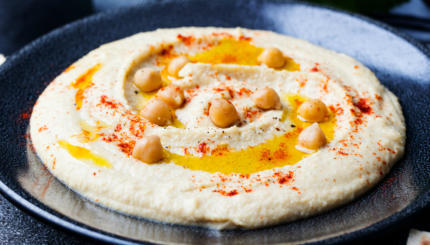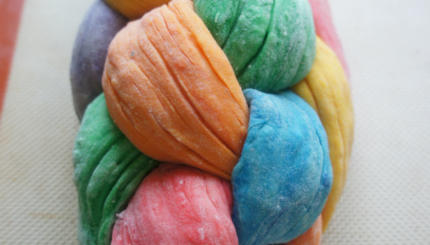After my first day in culinary school I came home with an armload–two white chef’s coats, two pairs of houndstooth pants, three starched aprons, six towels, a plastic name tag, and a bag of knives. And of all of the things people have asked me about since that day, the question I get the most is–what kind of knives should I buy?
Fortunately for the inquiring minds of my life and now for all of the Noshers out there, knife construction and handling was the first thing on the syllabus after orientation.
1. Material: Most knives are made of one of three types of metal–carbon, high carbon steel, and stainless steel. If you’re looking for a cheap knife that makes clean cuts, go with carbon. But while it is inexpensive and easy to sharpen, it’s not great for humid climates or acidic foods since it discolors easily and it does not hold an edge (i.e. doesn’t stay sharp). Unlike carbon knives, high carbon steel does not corrode, does hold an edge, and looks pretty, but is definitely more expensive and a bit trickier to keep sharp. Stainless steel knives have very strong blades that resist abrasion and discoloration, they’re cheap, and attractive, but it is hard to maintain an edge and the blade rips through food instead of slicing. Stainless steel is usually used for serrated knives since they don’t require the same kind of care.
2. Design: There are two key visual components to look at when choosing a knife–the tang and the rivets. The tang is the metal part that runs from the blade through the handle. The best quality knives are going to have a full tang, meaning it is one solid piece of metal. The number of rivets holding the tang and handle together are also a way to measure quality, with three rivets being the best.
3. Gut: I’m referring to your gut here, not the knife’s. Ultimately, it’s your knife so you need to be comfortable with how it feels in your hand. I like my knives to feel solid and weighty, but not leaden. A friend of mine recently bought a set of knives that, while highly functional, just feel all wrong to me because of their weight (although they are great if you want an easy way to keep them separated for meat, dairy, and pareve jobs). Also, think about how many knives you actually need. Yes, uniform knives in wooden knife blocks look lovely on your countertop, but in reality a chef’s knife, a paring knife, and a serrated knife are sufficient for pretty much any job. (Side note, if you’re looking for a way to store your miscellaneous collection of knives, I use this bamboo knife dock that fits into one of the awkward drawers in my kitchen and keeps my knives organized and safe).
Happy dicing!
pareve
Pronounced: PAHRV or pah-REV, Origin: Hebrew, an adjective to describe a food or dish that is neither meat nor dairy. (Kosher laws prohibit serving meat and dairy together.)




